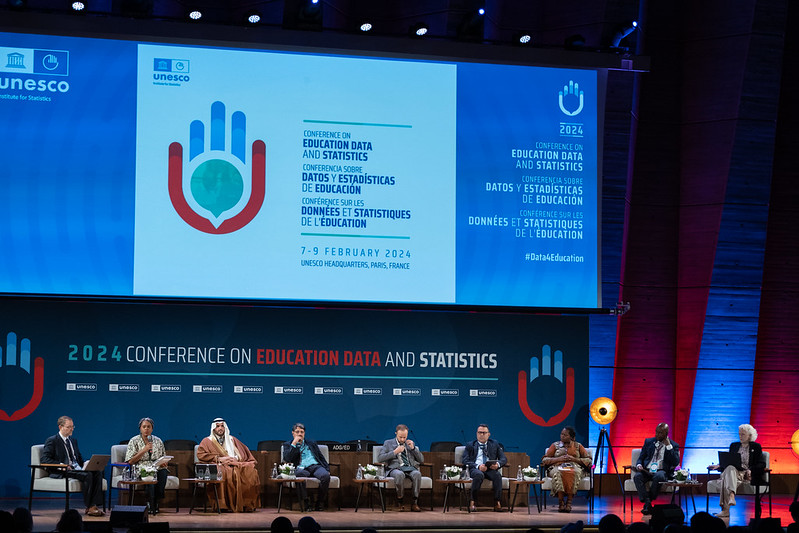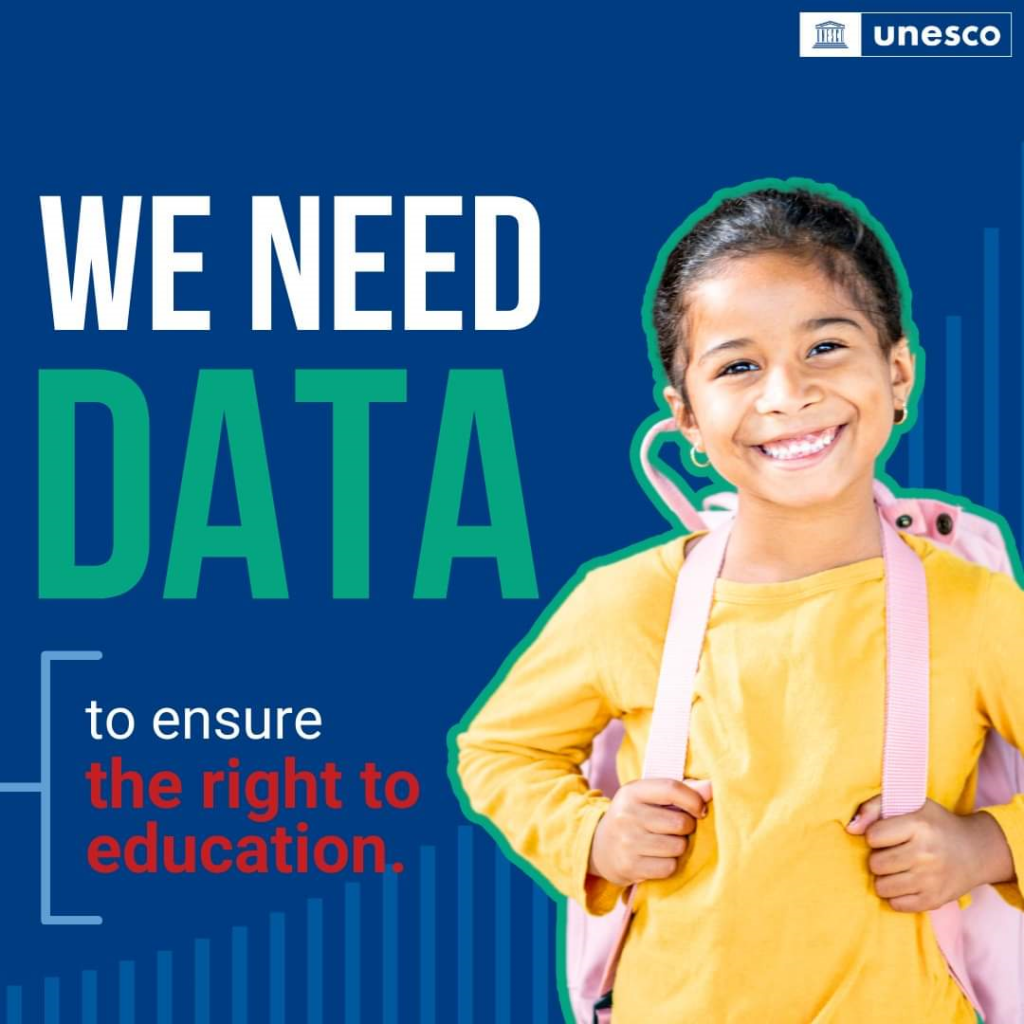Blog of Evelyne PARA, SI UN Representative at UNESCO.
On 7 – 9 February 2024, a Conference was organised at UNESCO Paris on Education Data and Statistics, by UNESCO Institute for Statistics (UIS) with support of UNESCO Education Sector.
Since 2015, countries have been invited to set national targets as part of their participation in the implementation of global agenda for sustainable development; within this Sustainable Development Goal 4 (SDG 4) has seen important changes to monitoring progress in education. These changes have created many opportunities, however, they have also increased demands on national statistical systems. The Technical Cooperation Group on SDG 4 Indicators (TCG) was established to lead the development of this monitoring framework. But the field of education statistics has not benefited from a regular, open forum where questions about the present and the future of internationally comparable data can be explored.
So, it was important to organise this first major international meeting, with all the stakeholders concerned, to evaluate the implementation of education-related programs around the world.

Stakeholders interested in evaluating the actions carried out
The UNESCO Member States (experts from ministries of education, learning assessment agencies, and national statistical offices), and several observers: Regional statistical agencies and organisations; United Nations specialised agencies, and other international organisations; aid agencies, foundations, and private partners, non-governmental organisations, and the teaching profession, participated with interest in the presentations and debates.
 While the last SDG Summit demonstrated that progress towards all global education targets was well off track, the UNESCO 2024 SDG 4 Scorecard shows that progress towards national targets is also insufficient.
While the last SDG Summit demonstrated that progress towards all global education targets was well off track, the UNESCO 2024 SDG 4 Scorecard shows that progress towards national targets is also insufficient.
Countries made good progress in connecting schools to the internet and in raising teacher qualifications, but progress on other benchmark indicators is not on course.
For instance, two thirds of countries with data have made no or slow progress towards their upper secondary completion rate targets since 2015. Countries are even moving backwards on closing gender gaps in upper secondary completion and on public expenditure on education. Another alarming trend, 40% of countries with data made no progress in reducing out-of-school rates since 2015. While 92% of adolescents should be enrolled in lower secondary education, only 88% are currently enrolled.
Fast progress has been observed improving participation in early childhood education in several African countries like Burkina Faso, Burundi, Madagascar, and Sierra Leone. However, despite commitments to improve education outcomes, 1 in 5 African children are still out of school, and gender parity remains elusive. And, despite a 48% growth in aid to basic education from 2014 to 2021, aid comprises only 5% of total education spending in Africa, and it is now declining. In Africa households play a crucial role, contributing 27% to total education spending. This highlights the substantial financial commitment families make to ensure access to learning opportunities.
To know more about education benchmarks in Africa, you can read the Progress Report on National Benchmarks in Africa and the special edition for the African Union Year of Education 2024.

New Global and national indicators have been specified
It was interesting to discover how countries are leveraging technology to enhance assessment, measure inclusion, and build capacity in education systems. The exchanges made it possible to gain valuable perspectives from diverse stakeholders on navigating the digital divide, enhancing data literacy, and harnessing innovative tools for data collection and analysis.
Benchmarks are taking the spotlight as the game-changer for SDG4 monitoring – and this first UNESCO great meeting also showed that to monitor progress in education we need better quality data!
This requires work on definitions, such as on what it means to be a qualified and trained teacher. It also requires better shared understanding of the appropriate data sources to monitor some indicators.
Data can inject momentum into policy agendas and inform policy planning and development, to help countries reach the national benchmarks they are committed to achieve.
This UNESCO Conference on Education Data and Statistics aimed also to:
- Establish an international community of practice of education statisticians guiding the TCG.
- Communicate, discuss, and reach consensus on concepts, definitions, methodologies, and operational aspects of indicator measurement in the form of recommendations and guidelines for adoption as international standards.
- Debate the impact of technology on education statistics and ways in which the community of education statisticians can benefit from opportunities and address challenges.
 On the occasion of this important meeting, another UNESCO publication entitled Her Atlas was also presented.
On the occasion of this important meeting, another UNESCO publication entitled Her Atlas was also presented.
This UNESCO’s interactive tool, allows users to explore the educational rights of girls and women around the world. With a color-coded scoring system that tracks legal indicators such as constitutions and legislation, the maps make it possible to visually monitor the legal progress toward securing the right to education for women in all countries.
In conclusion, by relying on theses data, each NGO and particularly our NGO Soroptimist International can better guide its actions around the world.

